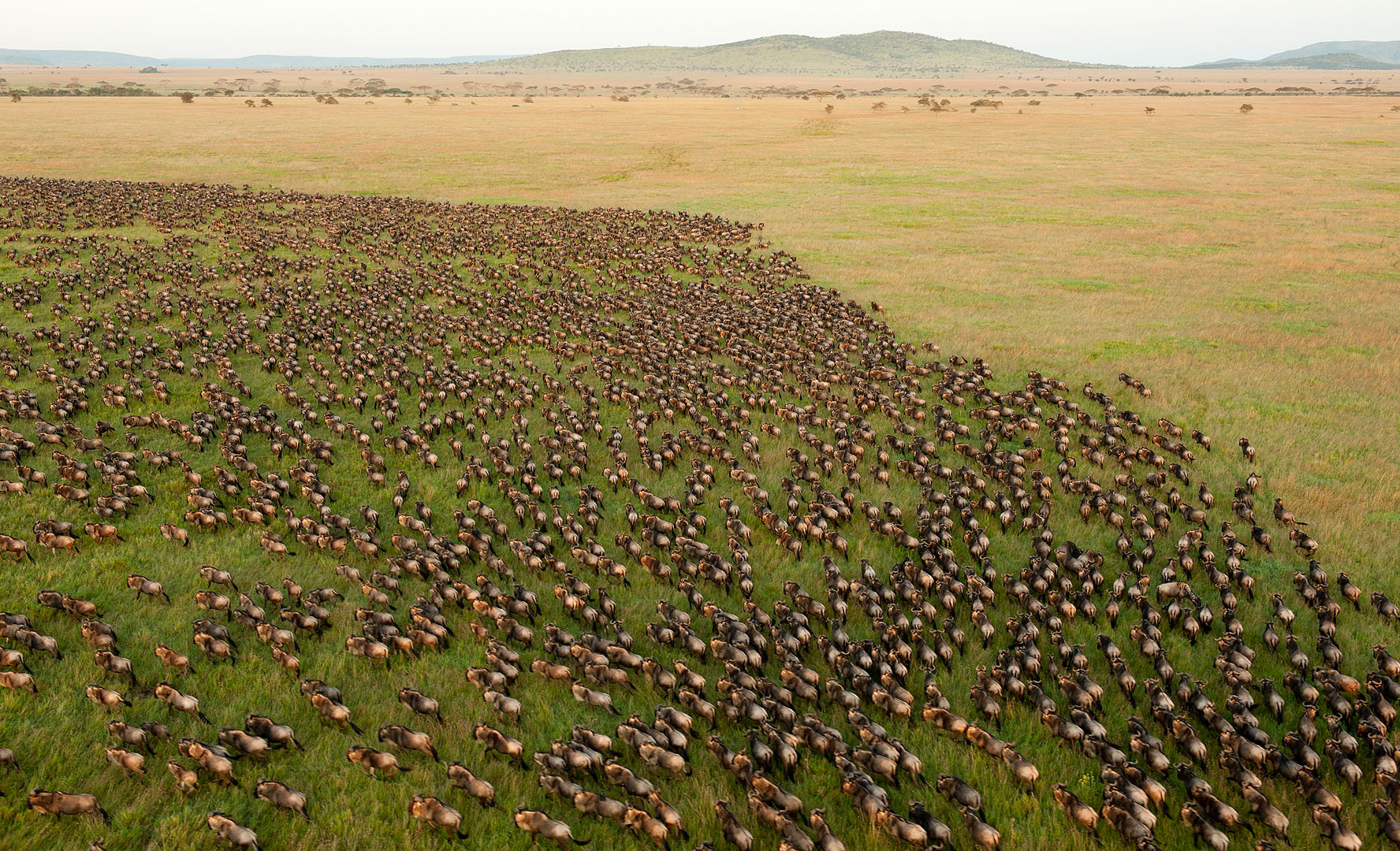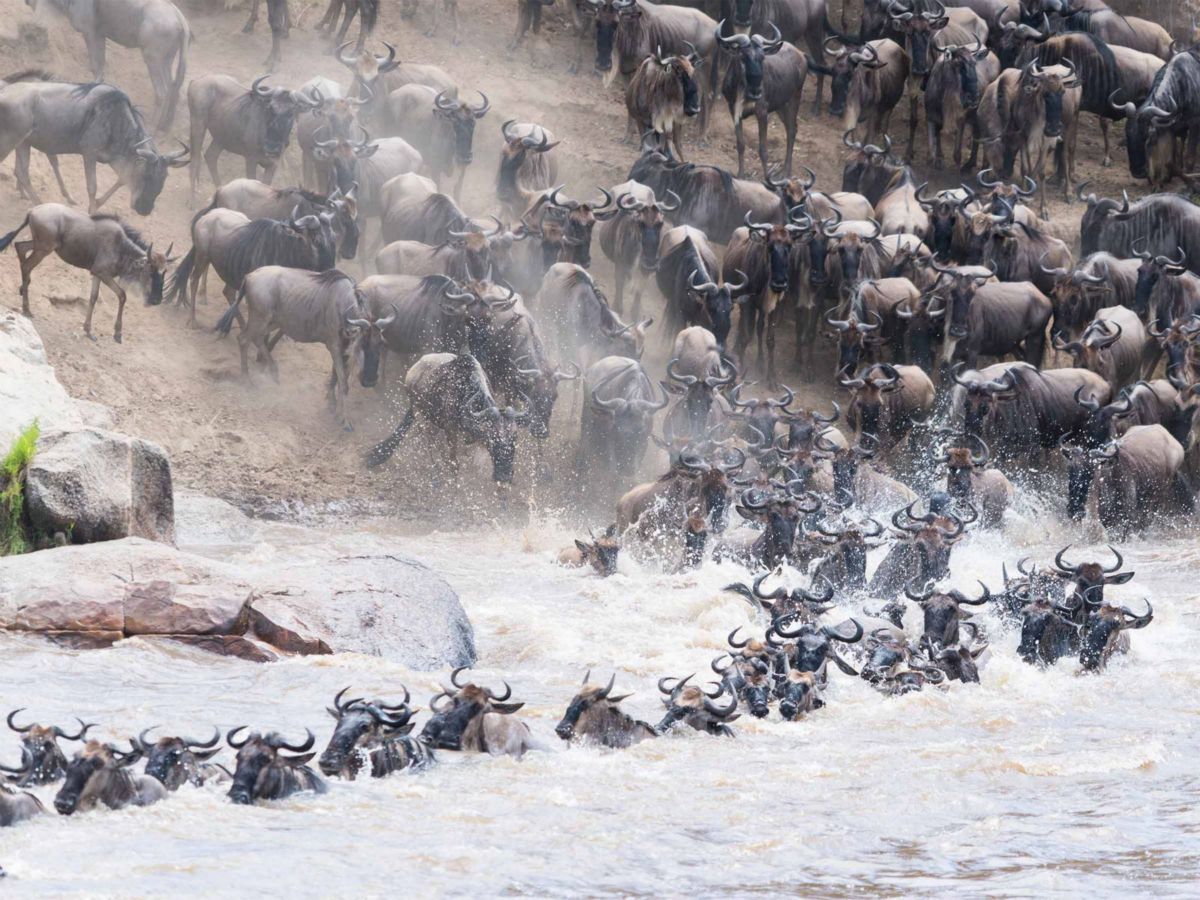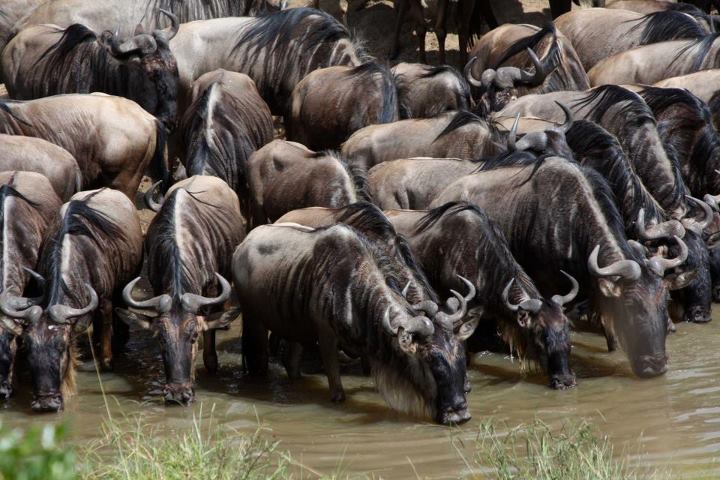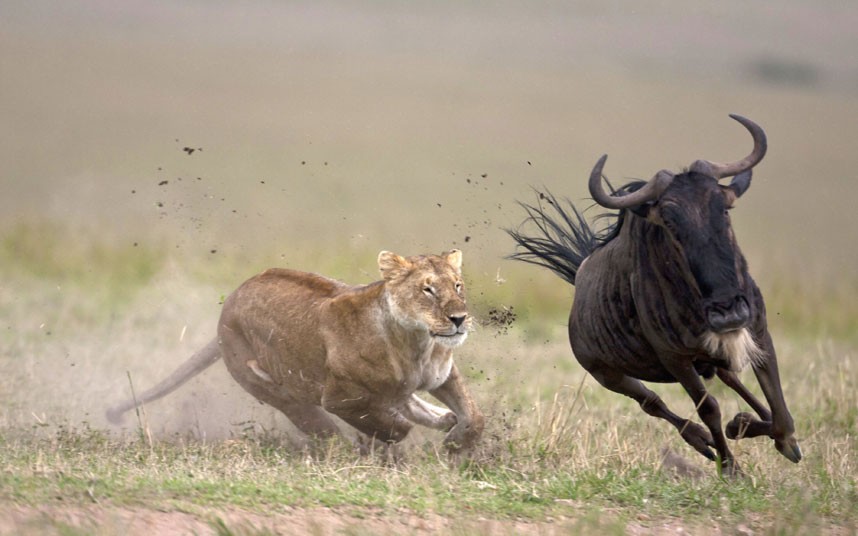 GNUS Cruise: A Month-By-Month Guide to the Wildebeest Migration:
GNUS Cruise: A Month-By-Month Guide to the Wildebeest Migration:
It is rated as one of the world’s most spectacular natural events – every year over a million wildebeest, zebra and antelope migrate clockwise around the Serengeti/Masai Mara ecosystem, taking in two different countries and making time for birthing, courting and mating on the way. Well, for those who do not get pulled down by ravenous predators, that is.

But the trouble with the wildebeest migration is that if you get your timing wrong, you will end up gazing out over a wildebeest-less Savannah and wondering why all the other animals are all laughing at you. You need to work out where to go and when! Based on historical data, this guide is not infallible (changing climate patterns do not help) but it will give you an idea of whether your safari will be one full of dramatic imagery – unbridled nature in full tooth and claw – or whether you will be showing your friends photos of your lodge room instead. For the most up-to-date advice, send us an inquiry and we’ll have an Africa Safari Expert answer all your migration questions.

Month by month: Wildebeest migration:
The short rains begin around early November. A little after this, in late November and December, the herds of the wildebeest migration arrive on the short-grass plains of the Serengeti. These are south and east of Seronera, around Ndutu and include the north of the Ngorongoro Conservation Area. Dispersed across these plains, wildebeest and zebra are everywhere – feeding on the fresh, nutritious grasses. They stay here through January, February and March, with most wildebeest calves born in a short window around February. Gradually they spread west across these plains, then around April they start their great migration north.
By May the Serengeti’s wildebeest all seem to be moving north, migrating to seek fresh grazing and water. The area around Moru Kopjes and west of Seronera is then hectic with a series of moving columns, often containing hundreds of thousands of animals – joined by many zebra, and a scattering of Thompson’s and Grant’s gazelles.

Some of the migration then head due north of Seronera, but most are usually further west. Around June the wildebeest migration is often halted on the south side of the Grumeti River, which has some channels which block or slow their migration north. The wildebeest then congregate there, in the Western Corridor, often building up to a high density before crossing the river. The river here is normally a series of pools and channels, but it’s not continuous – and so whilst they always represent an annual feast for the Grumeti River’s large crocodiles, these aren’t usually quite as spectacular as the crossings of the Mara River, further north.
The wildebeest migration continues moving northwards during July and August, often spreading out across a broad front: some heading through Grumeti Reserve and Ikorongo, others north through the heart of the Serengeti National Park.

September sees the herds spread out across the northern Serengeti, where the Mara River provides the migration with its most serious obstacle. This river gushes through the northern Serengeti from Kenya’s adjacent Maasai Mara Game Reserve. Watching the frantic herds of the wildebeest migration crossing the Mara River can be very spectacular; there are often scenes of great panic and confusion. It’s common to see herds cross the Mara River north on one day, and then back south a few days later.
By October the wildebeest herds are migrating again with more accord: all are heading south, through western Loliondo and the Serengeti National Park’s Lobo area, returning to the green shoots which follow the rains on the short-grass plains of the southern Serengeti in November. Then the whole Serengeti Wildebeest migration starts again …









